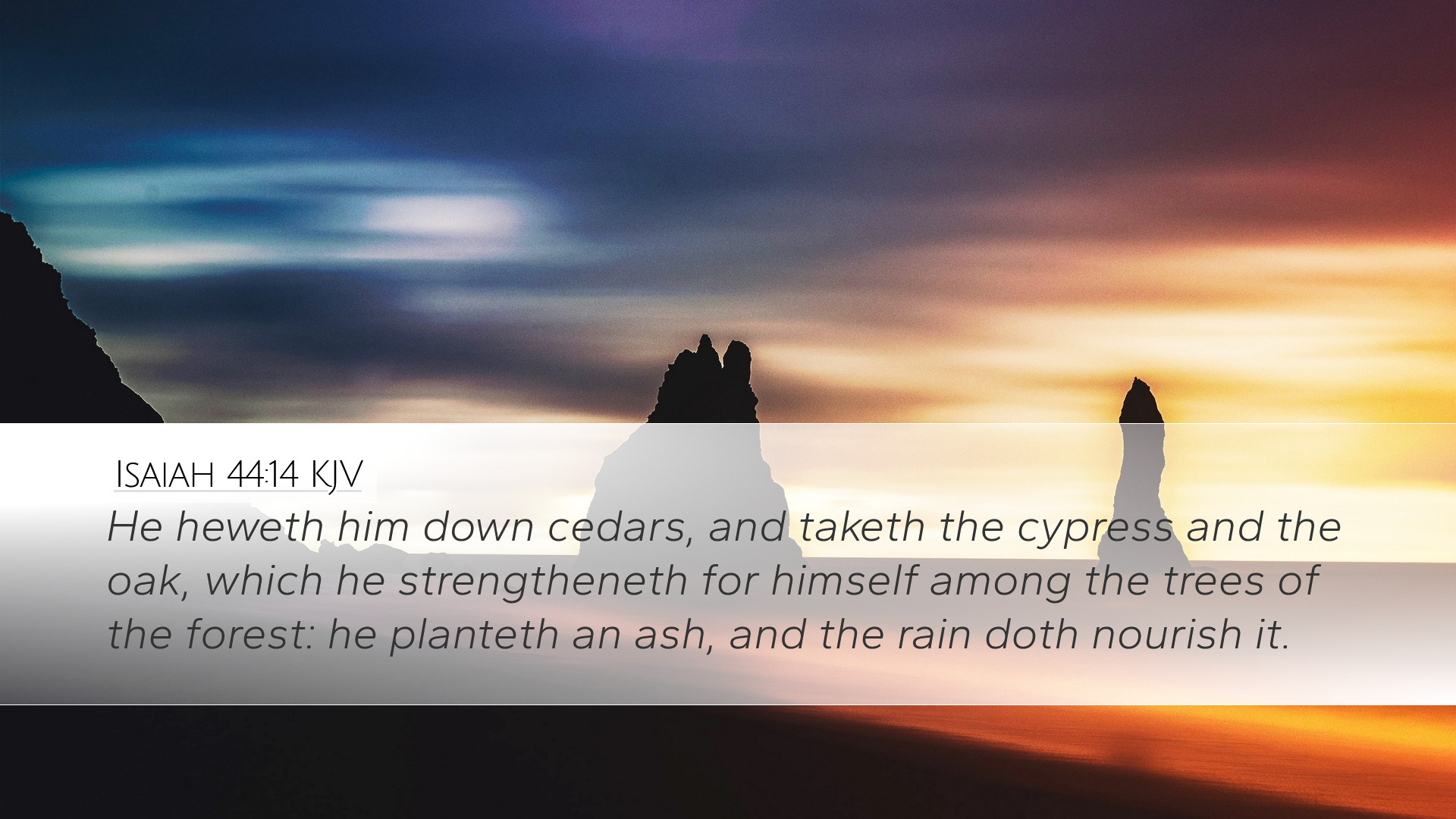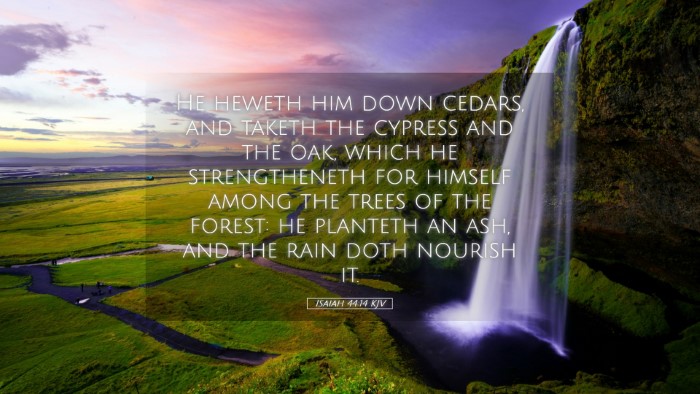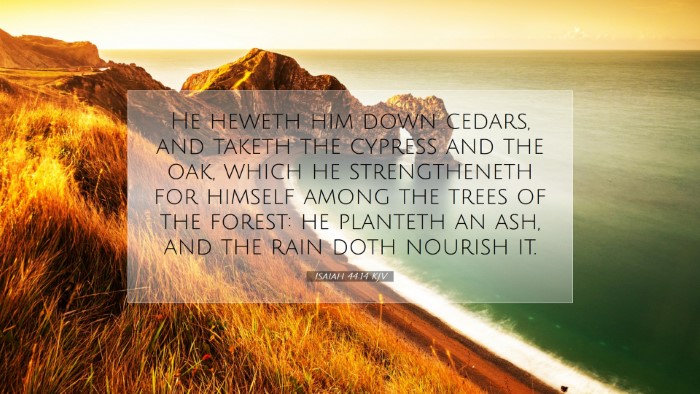Commentary on Isaiah 44:14
Isaiah 44:14 states:
"He cuts down cedars, or he takes a cypress and an oak; he chooses for himself a tree from the forest; he plants a fir, and the rain nourishes it."
Introduction to the Context
This verse falls within a broader section of Isaiah that emphasizes the folly of idolatry and contrasts the living God with lifeless idols. The prophet illustrates the absurdity of worshiping created things rather than the Creator.
Exegesis and Commentary
The Process of Crafting Idols
According to Matthew Henry, this passage illustrates the process by which craftsmen select trees and transform them into objects of worship:
- Observations on Wood Selection: The verse begins with the act of cutting down trees. Henry notes that this act itself highlights the dependency of the idol upon human effort.
- Farm to Idol: The careful selection of trees such as cedars and oaks emphasizes the deliberate choice in crafting idols, showcasing human pride in their creativity while being ignorant of true divinity.
- Nature Versus Artifice: The act of planting is juxtaposed with the act of creating, suggesting that the life-transforming power of God is far beyond mere human craft.
Idolatry as Folly
Albert Barnes provides insight into the absurdity of idol-making, arguing that:
- Human Limitations: The process illustrates how humans can take what is created by God and make it into a god for themselves. This contrasts with God's omnipotent involvement in creation.
- Misplaced Worship: The verse serves as a reminder of the futility of placing trust in wood and stone rather than in the living God, who sustains all creation.
- Emphasis on Divine Providence: Barnes suggests the nurturing of the planted tree symbolizes God’s providence that nourishes creation, highlighting the contrast to idols that cannot sustain themselves.
Theological Implications
Adam Clarke offers a theological perspective that is particularly relevant for understanding God's sovereignty in creation:
- God as Creator and Sustainer: Clarke emphasizes God's enduring role as the one who both creates and sustains life, contrasting this with the lifeless products of human hands.
- The Nature of Idols: The crafted idols become an allegory for spiritual blindness. Those who worship them fail to recognize the true source of life and power that is God alone.
- Challenging the Audience: Clarke notes that this passage serves as a challenge to examine personal and communal practices of worship, ensuring they align with the truth of God's nature.
Application for Today
For modern-day pastors, students, theologians, and scholars, Isaiah 44:14 provides profound lessons:
- Idolatry in Contemporary Context: The verse invites reflection on what we elevate to the status of authority in our lives—be it material possessions, ideologies, or relationships.
- Cultivating True Worship: It emphasizes the need for a worship that acknowledges God as creator and sustainer, considering how we express our faith through actions and priorities.
- Engagement with Culture: Engaging with culture should prompt discussions around values associated with materialism against the biblical principle of stewardship and creation care.
Conclusion
The imagery in Isaiah 44:14 serves as a powerful reminder of the dangers of idolatry, encouraging believers to embrace the living God as the source of all life. The commentary from esteemed theologians like Matthew Henry, Albert Barnes, and Adam Clarke provides a framework for understanding the text's implications for faith and worship today.


